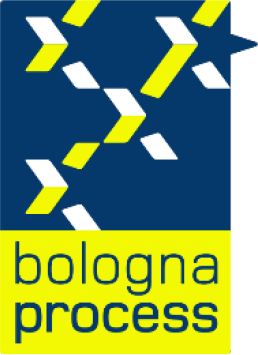Medical Imaging Techniques
Course Details

KTO KARATAY UNIVERSITY
Vocational School of Medical Services
Programme of Medical Imaging Techniques
Course Details
Vocational School of Medical Services
Programme of Medical Imaging Techniques
Course Details

| Course Code | Course Name | Year | Period | Semester | T+A+L | Credit | ECTS |
|---|---|---|---|---|---|---|---|
| 02931009 | Presentation Techniques | 2 | Autumn | 3 | 2+0+0 | 3 | 3 |
| Course Type | Elective |
| Course Cycle | Associate (Short Cycle) (TQF-HE: Level 5 / QF-EHEA: Short Cycle / EQF-LLL: Level 5) |
| Course Language | Turkish |
| Methods and Techniques | - |
| Mode of Delivery | Face to Face |
| Prerequisites | - |
| Coordinator | - |
| Instructor(s) | - |
| Instructor Assistant(s) | - |
Course Content
Presentation and presentation types include planning presentation, preparing presentation, making presentation, evaluating presentation and evaluating student presentations.
Objectives of the Course
Students; it is aimed to prepare a presentation suitable for narrative purpose by reaching and compiling knowledge on a certain topic and to develop the ability to present it to a community.
Contribution of the Course to Field Teaching
| Basic Vocational Courses | |
| Specialization / Field Courses | |
| Support Courses | X |
| Transferable Skills Courses | |
| Humanities, Communication and Management Skills Courses |
Relationships between Course Learning Outcomes and Program Outcomes
| Relationship Levels | ||||
| Lowest | Low | Medium | High | Highest |
| 1 | 2 | 3 | 4 | 5 |
| # | Program Learning Outcomes | Level |
|---|---|---|
| P | 4 | |
| P7 | Ability to express and make connections between at least two different courses outside the field that contribute to the individual's general culture. | 3 |
Course Learning Outcomes
| Upon the successful completion of this course, students will be able to: | |||
|---|---|---|---|
| No | Learning Outcomes | Outcome Relationship | Measurement Method ** |
| O1 | Ability to find the difference between different disciplines. | P.7.1 | 1 |
| ** Written Exam: 1, Oral Exam: 2, Homework: 3, Lab./Exam: 4, Seminar/Presentation: 5, Term Paper: 6, Application: 7 | |||
Weekly Detailed Course Contents
| Week | Topics |
|---|---|
| 1 | INTRODUCTION: Course aims and objectives, Presentation definition and Presentation types |
| 2 | PRESENTATION PLANNING: Purposes and Objectives of the Presentation |
| 3 | PRESENTATION PLANNING: Designing Support Tools to be Used in the Presentation, Venue Arrangements |
| 4 | PRESENTATION PREPARATION: Collecting information and data, Organizing information/data, Creating a plan, Translating information/data into text |
| 5 | PRESENTATION PREPARATION: Determining the visual support tools to be used, Translating the written presentation text into speech, Rehearsing the presentation |
| 6 | PREPARING A PRESENTATION: What you need to know about preparing a presentation with MS-Office Powerpoint |
| 7 | MAKING THE PRESENTATION: Communication Elements of the Presentation-1: -Verbal communication, -Non-verbal communication-Body language, Things to consider in the use of body language during the presentation |
| 8 | Midterm |
| 9 | MAKING THE PRESENTATION: Communication Elements of the Presentation-2: Listening, Asking Questions-Answering Questions, Summarizing-Feedback, -Evaluation |
| 10 | PRESENTATION EVALUATION: Content, introduction and preparation of Presentation Evaluation Forms, Evaluation of the presentation |
| 11 | Student Presentations and Evaluation |
| 12 | Student Presentations and Evaluation |
| 13 | Student Presentations and Evaluation |
| 14 | Student Presentations and Evaluation |
Textbook or Material
| Resources | lecturer presntation |
Evaluation Method and Passing Criteria
| In-Term Studies | Quantity | Percentage |
|---|---|---|
| Attendance | - | - |
| Laboratory | - | - |
| Practice | - | - |
| Field Study | - | - |
| Course Specific Internship (If Any) | - | - |
| Homework | - | - |
| Presentation | 1 | 40 (%) |
| Projects | - | - |
| Seminar | - | - |
| Quiz | - | - |
| Listening | - | - |
| Midterms | 1 | 30 (%) |
| Final Exam | 1 | 30 (%) |
| Total | 100 (%) | |
ECTS / Working Load Table
| Quantity | Duration | Total Work Load | |
|---|---|---|---|
| Course Week Number and Time | 14 | 2 | 28 |
| Out-of-Class Study Time (Pre-study, Library, Reinforcement) | 14 | 2 | 28 |
| Midterms | 1 | 10 | 10 |
| Quiz | 0 | 0 | 0 |
| Homework | 0 | 0 | 0 |
| Practice | 0 | 0 | 0 |
| Laboratory | 0 | 0 | 0 |
| Project | 0 | 0 | 0 |
| Workshop | 0 | 0 | 0 |
| Presentation/Seminar Preparation | 1 | 14 | 14 |
| Fieldwork | 0 | 0 | 0 |
| Final Exam | 1 | 10 | 10 |
| Other | 0 | 0 | 0 |
| Total Work Load: | 90 | ||
| Total Work Load / 30 | 3 | ||
| Course ECTS Credits: | 3 | ||
Course - Learning Outcomes Matrix
| Relationship Levels | ||||
| Lowest | Low | Medium | High | Highest |
| 1 | 2 | 3 | 4 | 5 |
| # | Learning Outcomes | P7 |
|---|---|---|
| O1 | Ability to find the difference between different disciplines. | 3 |
